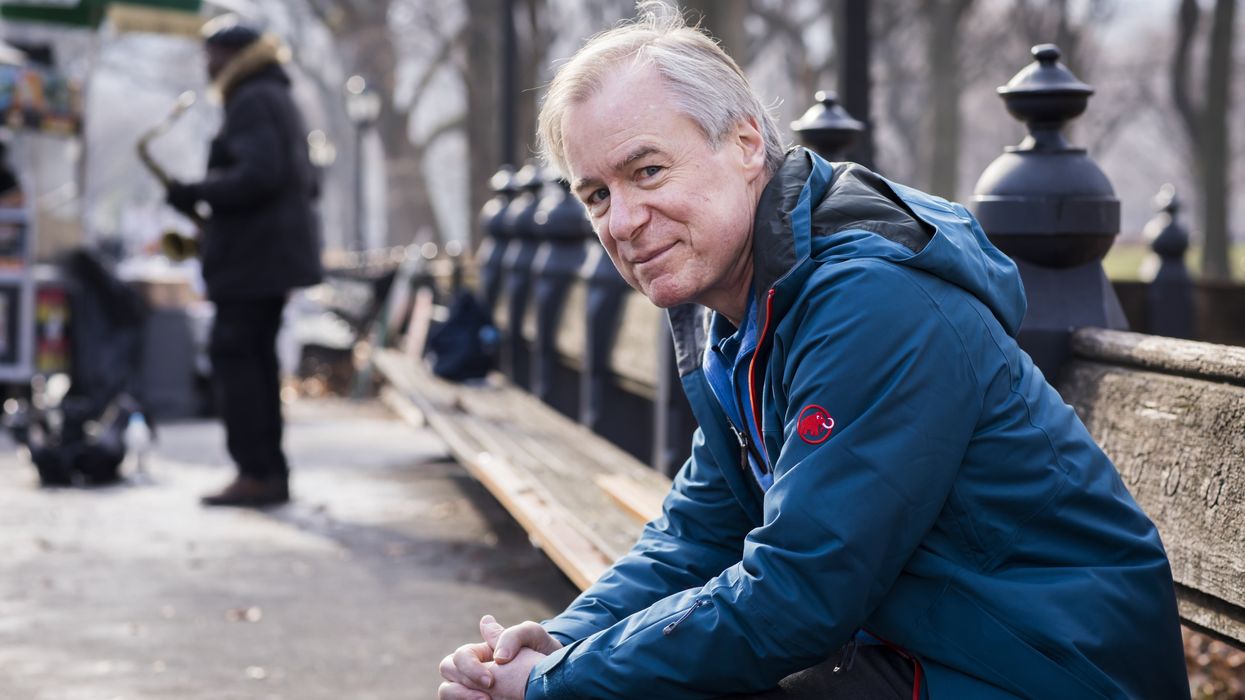Symphony and Star Conductor Robertson Present Serendipitously Timed 'El Niño' Oratorio

David Robertson
AS HOUSTON SLOWLY recovers from last week’s severe derecho, it is strangely serendipitous that on May 25 and 26, a little over a week after that unexpected drama, the Houston Symphony will perform composer John Adams’ critically acclaimed Nativity oratorio El Niño, named after the 1997 meteorological phenomenon and precursor to what we now refer to as “weird weather.”
This weekend’s performances feature soprano Susanna Phillips, mezzo-soprano Kelley O’Connor, bass-baritone Davóne Tines, a trio of countertenors, the Houston Symphony Chorus, and The Treble Choir of Houston at Christ Church Cathedral. American-born, and internationally renowned conductor David Robertson, a longtime advocate and interpreter of Adams’ music, will lead the performances of deeply emotional work.
“I get terribly moved by the piece,” says Robertson, who first experienced El Niño when it premiered in December 2000 at the Théâtre du Châtelet, Paris. “My biggest concern whenever I’m conducting it is not to become a weeping mess!”
Unlike its Paris premiere, which included an over-abundance of choreography and theatrical busyness, or its current run as an elaborately staged opera at the Metropolitan Opera, the Houston Symphony is presenting El Niño as a straightforward oratorio. Robertson has always conducted the work without additional visual elements. Throughout the work’s 24 sections, there are already plenty of layers in its multilingual libretto and centuries-spanning music that allow the listener to envision several different images at once.
“If you have a grandparent who is a great storyteller, you don’t need pictures when you’re a child,” says Robertson. “They know just how to keep you completely enchanted with the magic of their story, and John does precisely the same thing, uninterruptedly, in El Niño.”
That enchantment begins with El Niño’s energetic first number “I Sing of a Maiden” for chorus and countertenors, who enter singing just single syllables before moving on to complete words and phrases, enveloping the listener in what sounds like a flock of angels, giddy with the news that the word will be made flesh. Meanwhile, the male sopranos infuse the chorus with archaic, Baroque colors, and Adams’ complex, kaleidoscopic rhythms evoke the beats of American pop music as if Handel were DJing a warehouse rave.
When asked about conducting the wide range of solos, duets, trios, and ensemble numbers at comprise El Niño’s complex musical universe, Robertson is quick to emphasize the collaborative nature of his job. “Sounds that are made reverberate in the air for a short period of time, so the real genius of music is the combination of all the souls who happen to be producing those sounds, and how those different people blend their concept of sound,” explains Robertson. “The conductor ends up being the central network of how that happens.”
Without giving too much away, El Niño’s dramatic closing number is surprising and provocative, though no less enchanting than its angelic opening. It features the appearance of a palm tree in the middle of a desert, blending a description of that miracle from the Gospel of Pseudo-Matthew — one of several apocryphal texts used in El Niño — with a poem by 20th-century Mexican author, feminist and activist Rosario Castellanos. Such events as they are described in the Bible or writings expunged from that canon remind us that transcendent experiences are part of our everyday, contemporary lives, be it the birth of a child, or a performance by “a combination of souls” that tells the story of that birth through music.
“Things that we take for granted, like a simple palm tree, are already miraculous,” says Robertson.
- This Weekend: International Piano-Playing Bros Take On 'Abstract' Concerto with the Houston Symphony ›
- Symphony Presents ‘Big’ Glamorous Night of Music and Philanthropy ›
- This Weekend: The Houston Symphony’s Got Rhythm — for Jazz-Lovers and Kids Alike ›
- In-Demand Soprano, HGO Studio Alum Joins the Symphony for Emotive Strauss Program - Houston CityBook ›
- Symphony Opening Night Channels New York’s Gilded Age with Dvorak and Glam Gala - Houston CityBook ›




















